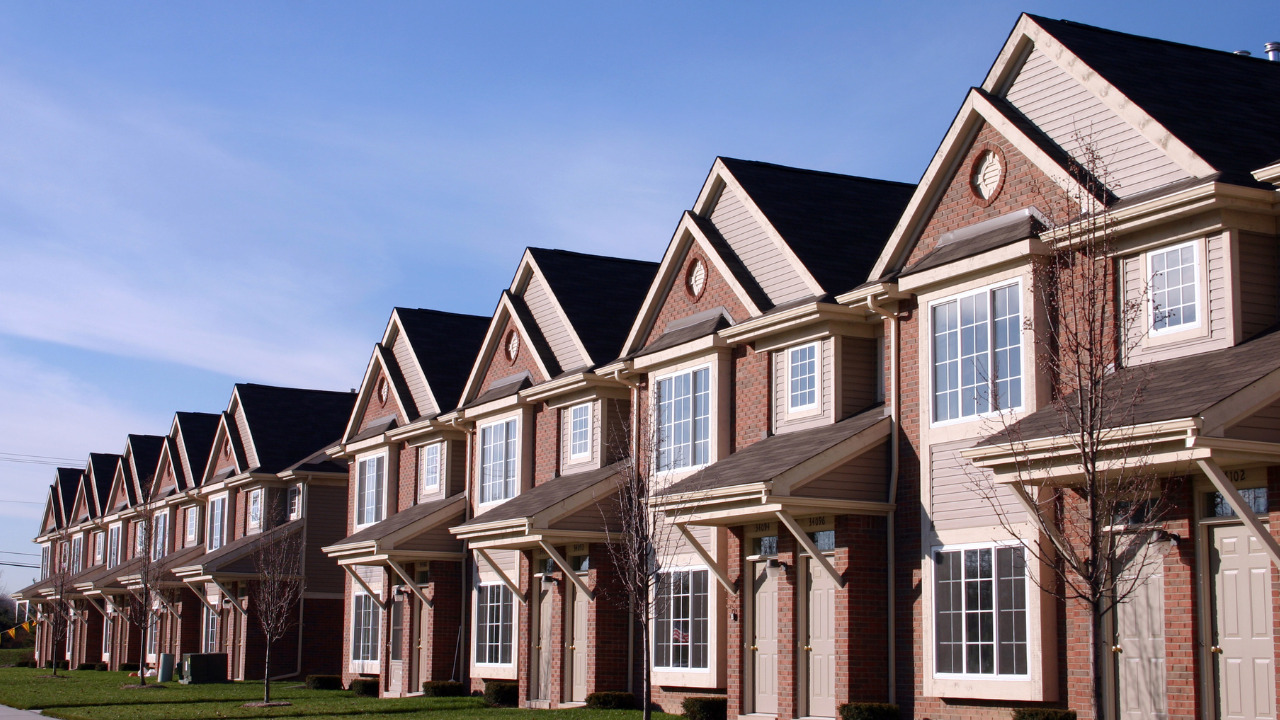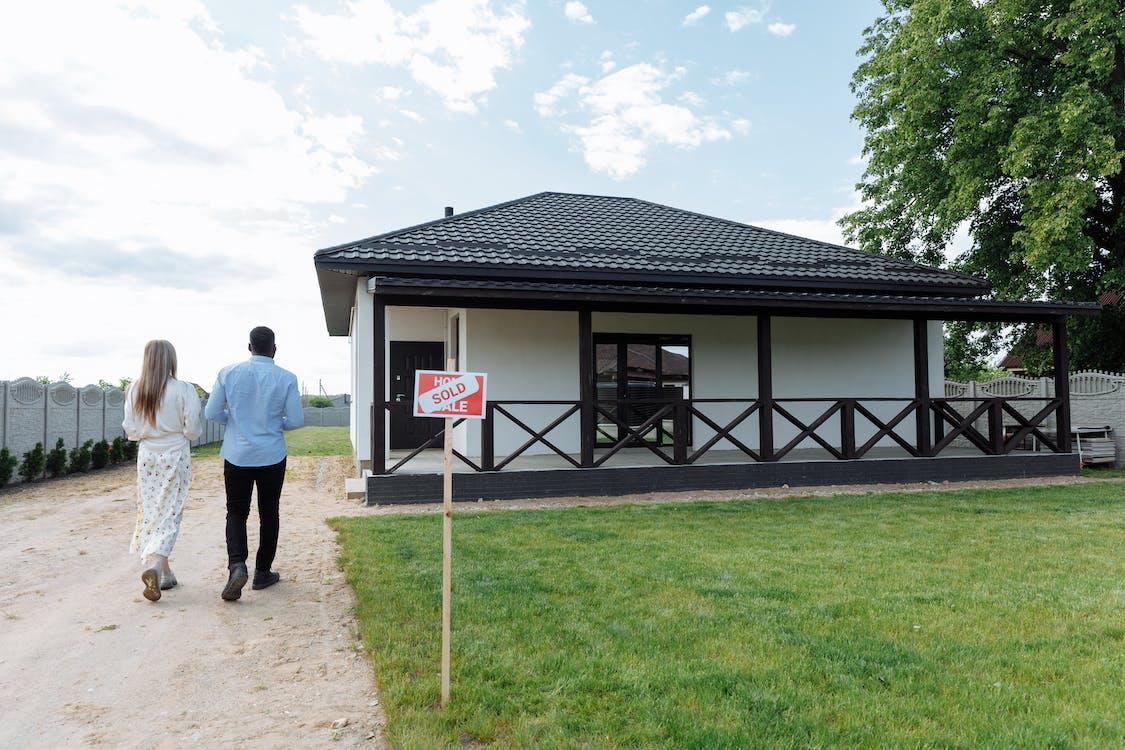If you talk about homogeneity in houses, rowhouses are probably what you are referring to subconsciously.
Having its roots emanating from Scandinavian architecture, the row house was first built in 1928 and is perhaps one of the first functionalistic buildings in the country. Prior to this, many other historical buildings were later referred to as rowhouses but were not intended for residential purposes.
In Washington DC, the rows of homes lined up together, shared common walls with adjunct houses and were practically attached to one another. These houses are termed row houses.
Table of Contents
Defining Rowhouses
Rowhouses (may also be written as ‘row houses’) comprise contiguous residential units aligned along the length of the street in such a manner that each house shares its sidewalls at both ends with the adjacent or lateral houses. The exterior architecture of houses is the same but the paint color may vary for them.
Comprising steel frame windows and concrete floors cast on two steel beams, the architecture of the house is distinct among its kinds. Another striking feature of a row house is the position of the main door which is secluded from the front of the house and the passers-by in the street.
In order to enter through the main door, you will need to walk the way around the building and enter from the back. The reason for such a design is that Danish modernism looks up to the American architect Frank Lloyd Wright, who was the first to propose the idea of locating the front door at the back away from door salesmen.
Initially, the row houses were designed for the working class but later on caught the attention of the creative class. With the creative class settling in, the value of the property experienced intermittent spikes and today, these houses form one of the most attractive areas in Copenhagen, Denmark.
Rowhouses were a characteristic symbol of older cities around the globe, however, contemporary urban planners do consider this unique style in medium-density areas.
Purpose of Constructing Row Houses
The primary aim behind such a construction was to build an accessible urban housing alternative to the suburban settlements. With a rise in the population density of large cities, urban planners shifted towards increasing the vertical space and constructing tall residential buildings for this purpose.
However, older US neighborhoods found rowhouses a good idea, picked up from history, to accommodate the human bulk.
Features of Row Houses
- Row houses extend the entire length of a block with a continuous stretch of the roof and line up in the street.
- The houses in the row most likely have a replicated exterior look, however, the exterior paint color may be subject to variations.
- Row houses typically are low-rise buildings extending vertically to form a two- to five-story residential unit.
- Despite sharing an attached wall with the neighboring houses, each house in the row is structurally capable of standing on its own if the homes on either side are to be taken down.
- The parking garage in such houses is generally located at the back of the house
- These houses have large windows to let ample sunrays illuminate the interior.
- These houses are primarily constructed for accommodating one to two families. However, when the need to contain more people grew with the surging population, the building was divided into smaller apartments to create more living space.
Rowhouses vs Townhouses; What is the Difference?
The words townhouse and rowhouse are oftentimes used interchangeably. However, they have a few different characteristics that we shall discuss.
- A townhouse, no matter where it is constructed, is meant to be a single-family dwelling. Contrarily, a rowhouse may accommodate two families, and if the need is, it can be subdivided into smaller apartments to accommodate more families.
- Cost comparison between the two shows that rowhouses are relatively less expensive than townhouses.
Pros of Row Houses
- A line of similar houses lends an aesthetic and cohesive exterior look and the neighborhood looks homogeneous.
- These houses make an apt use of space for residential purposes and very little or no space is left for luxurious reasons.
- Rowhouses are more affordable that other single-family homes or apartments.
- The maintenance cost of a rowhouse is generally less when compared with a similar free-standing home.
- Since the neighborhood of rowhouses offers coherence, community engagement and intermingling are also seen to augment. This means that everyone around you is essentially your neighbor and someone you would call in times of need. In other words, the residents get to experience the true and rejuvenated concept of community living.
- The best part is that people living in the same community share the same living standard and lead a life devoid of undesirable comparisons.
- The chances of street crimes in a busy neighborhood just like that in a rowhouse are likely to reduce substantially. In addition, in case you are out of your home station and something unexpected happens, your neighbors will be right there to lend some timely assistance.
Cons of Row Houses
- With houses being replicas of each other, especially as far as the exterior look is concerned, the renovation work might prove to be a pesky task. It might become arduous to balance historic preservation.
- Owing to interconnected houses, the available space for yard and garden is restricted. This is because when rowhouses were first built, they intended to accommodate maximum number of people and luxury was something last heeded. However, later on, many rowhouses have modernized architecture.
- Since each family is bound to share a wall with the adjacent neighbor, this is something that might have consequences in terms of compromised privacy and noises intruding from the lateral houses.
Frequently Asked Questions (FAQs)
What is the difference between row houses and semi-detached houses?
A row house shares its sidewalls at both ends with the neighboring houses at the right and left of it and is essentially considered attached to them. However, a semi-detached house is a type of duplex house that only shares a single wall with the neighboring house and one sidewall is only common to itself.
Being partially attached to a house on one end can be advantageous in terms of buying a coherent property such that a part of it can be rented out. However, other factors ought to be considered before such an investment including the level of privacy, the maintenance cost, and the like.
What are detached houses?
Detached houses are free-standing homes that have no sidewall in common with any neighboring house. It functions as a separate residential unit
Where are rowhouses found in the US?
The rowhouse type of construction can be found in many cities across the US. These include New York City, San Francisco, Chicago, and a lot more. Some of these houses are considered to be historic structures, dating back to the 19th century.
In many parts of the US, the rowhouses give a feeling of integrity with the history and one does get to experience this wholesomeness while living in one.










